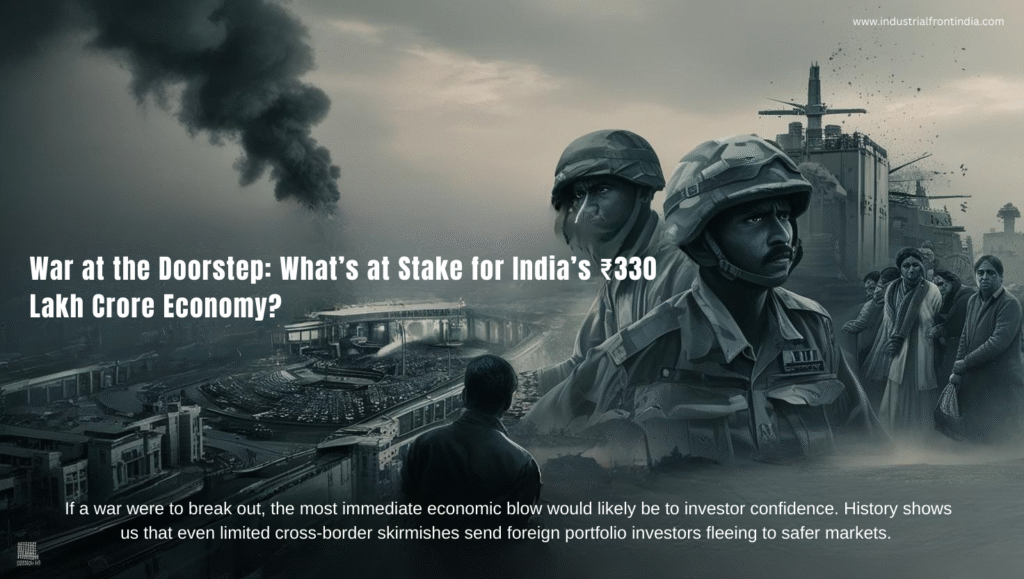As tensions rise once again along the Indo-Pak border, the specter of a full-scale war between the two nuclear-armed neighbors is no longer unthinkable. While diplomacy continues to play a critical role in de-escalation efforts, the economic ramifications of such a conflict — if it materializes — would be severe and far-reaching for India. The nation, currently riding high on robust GDP growth and strong domestic consumption, stands to suffer major setbacks across several economic fronts should conflict erupt.
India’s economy is currently among the fastest-growing in the world, projected to cross the $4 trillion mark this year. Despite a volatile global climate, India has continued to attract foreign investment, thanks to trade deals with the UK and promising negotiations with the U.S. However, recent military actions have already begun to stir the markets. On May 7, the Indian rupee saw its steepest single-day fall in a month, closing at 84.82 against the dollar. Bond markets have reacted with caution, with visible outflows reflecting investor anxiety. Though the stock market has shown relative resilience, the underlying nervousness is palpable.
If a war were to break out, the most immediate economic blow would likely be to investor confidence. History shows us that even limited cross-border skirmishes send foreign portfolio investors fleeing to safer markets. Between January and March 2025 alone, FPIs withdrew ₹61,000 crore from Indian equities — a staggering exit driven by both domestic unease and global recession fears. In the event of war, this number could multiply, putting pressure on both financial markets and the Indian rupee.

A prolonged conflict would also threaten India’s trade dynamics, even though direct trade with Pakistan remains minimal. Regional supply chains, logistics networks, and export channels could face severe disruptions, particularly in agriculture and consumer goods. The suspension of the Indus Waters Treaty by India, which led to a 90% drop in water supplies to Pakistan’s Chenab Basin, signals how economic warfare could also unfold in parallel, disrupting the agriculture sector in the border states.
Certain industries are particularly vulnerable. The IT sector, already coping with declining demand from Western markets, would face additional challenges if global clients begin to view India as a risk-prone destination. Similarly, the auto industry — dependent on steady consumer demand and international components — could experience sharp production cuts. Pharmaceuticals, another Indian export stronghold, might face hurdles due to disrupted logistics and a scarcity of raw materials in a war scenario.
